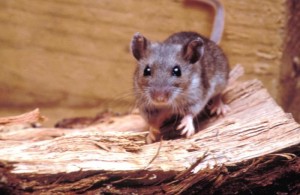State and local health officials in Montana have reported the first confirmed case of Hantavirus Pulmonary Syndrome (HPS) in Montana this year in a resident of Missoula County. The individual is a 20-year-old male from Missoula. Health officials say he survived the serious viral disease.

“Montanans should be aware of the precautions they can take to avoid Hantavirus and the rodents that can carry it,” said Montana Department of Public Health and Human Services Director Richard H. Opper. “People can contract the illness when they breathe in air contaminated by the virus. It is important to avoid actions that raise dust, such as sweeping or vacuuming if signs of rodents are present. Protecting yourself and cleaning correctly is essential.”
Hantavirus is a life-threatening disease spread to humans by rodents that has symptoms similar to influenza.
Hantavirus is carried by rodents, especially deer mice. The virus is found in their urine and feces, but it does not make the animal sick.
It is believed that humans can get sick with this virus if they come in contact with contaminated dust from mice nests or droppings. You may come in contact with the dust when cleaning homes, sheds, or other enclosed areas that have been empty for a long time.
Hantavirus does not spread between humans.
The Centers for Disease Control and Prevention (CDC) divides the symptoms of hantavirus between “early” and “late” symptoms.
Early symptoms include fatigue, fever and muscle aches, especially in the large muscle groups—thighs, hips, back, and sometimes shoulders. These symptoms are universal.
There may also be headaches, dizziness, chills, and abdominal problems, such as nausea, vomiting,diarrhea, and abdominal pain. About half of all HPS patients experience these symptoms.
Four to 10 days after the initial phase of illness, the late symptoms of HPS appear. These include coughing and shortness of breath, with the sensation of, as one survivor put it, a “…tight band around my chest and a pillow over my face” as the lungs fill with fluid.
HPS has a mortality rate of 38% according to the agency.
This case increases Montana’s Hantavirus case count to 39 since 1993. Of the 39 cases reported, 10, or about 25% of cases resulted in death. Montana typically sees one to two cases a year, making Montana second only to New Mexico in the number of cases per 100,000 population.


Any reports of other species infected and symptomatic or as carriers? Thank you.